Updated
12 min read
How to Make Money From Mobile Apps
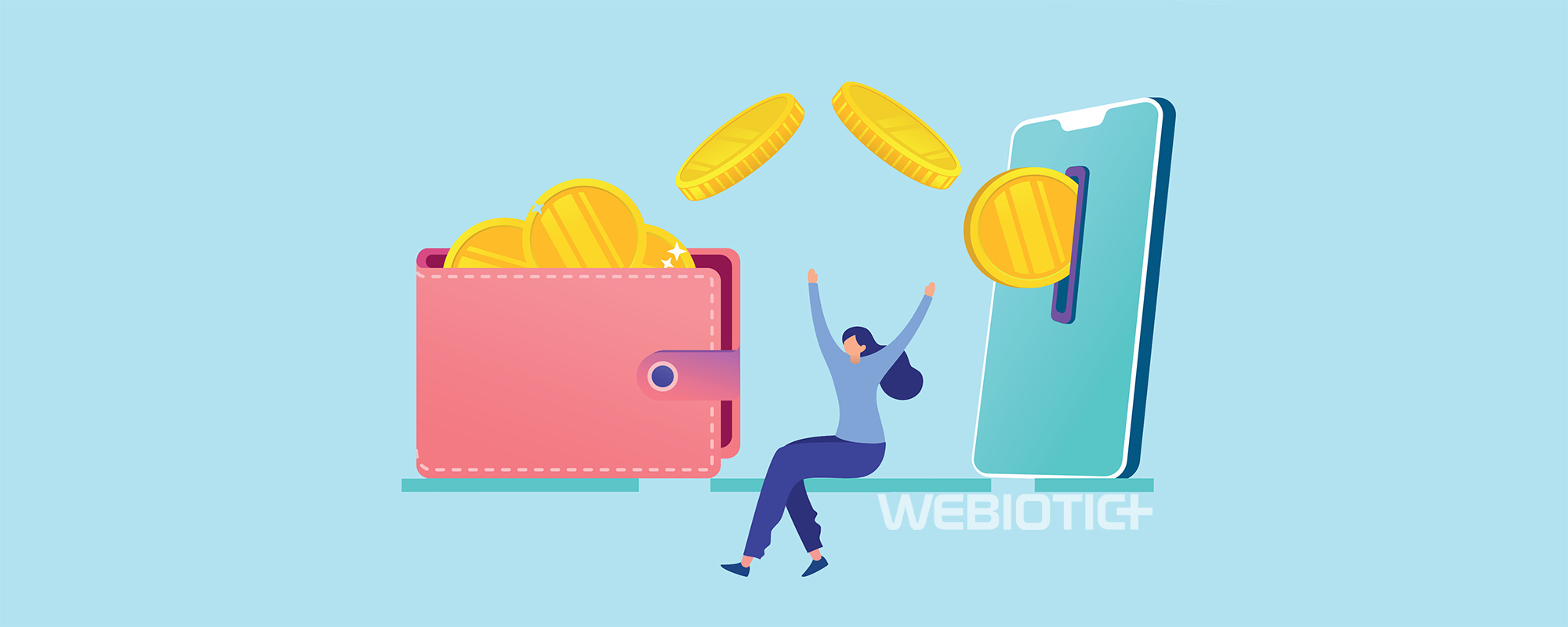
Over the years, app developers and entrepreneurs have found various ways for their app to make money, no matter what category that falls into.
Some will choose one monetization method and stick to it, others will opt to combine multiple methods for bringing in revenue.
In this article, we’ll review how to make money from mobile apps and what you can expect from the most popular monetization methods.
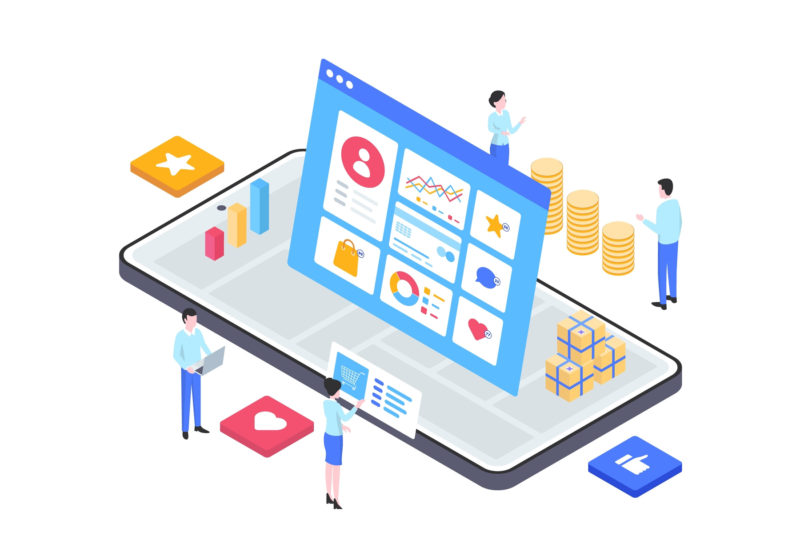
Table of Contents
- Paid Vs Free Apps
- Pros and Cons of Free Mobile Apps
- Pros and Cons of Paid Mobile Apps
- In-App Purchases
- Pros and Cons of In-App Purchases
- Subscriptions
- The Two Models of Subscriptions
- Subscription Model Pros and Cons
- In-App Advertisements
- Ad Pricing Models
- Video Ads
- Interstitial Ads
- Native Ads
- User Engagement & Retention Strategies
- Affiliate Marketing and Referral Programs within Apps
Chapter #1: Paid Vs Free Apps
A big question you’ll find yourself asking right from the start is whether your app should be free or if users will need to pay to use it.
How it works with paid apps is users will need to pay an upfront amount to download the app from app stores like Google Play or Apple’s App Store.
Free apps, on the other hand, are completely free to download. How free apps make money is through other avenues, such as in-app advertising or paid subscriptions. But we’ll get into that more later.
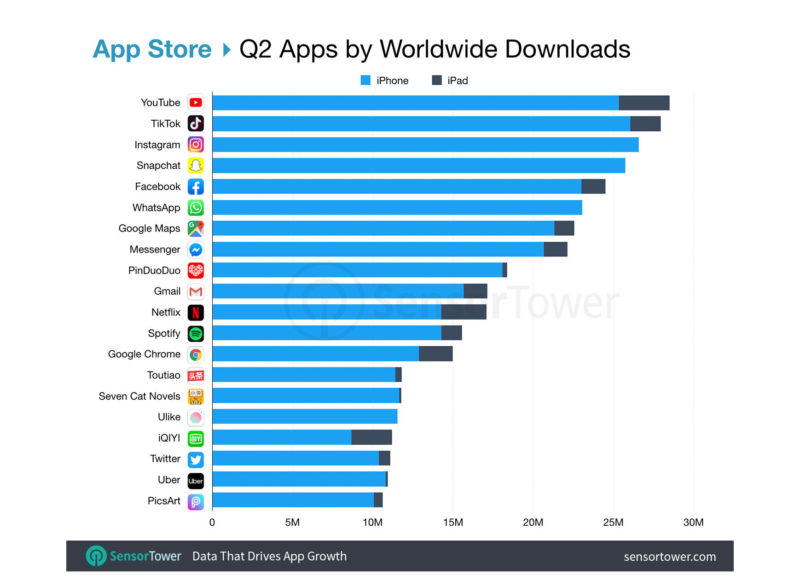
Apps that fall into the categories of gaming, education, or utility will often require users to pay to download the app. This is because the value of the app is in its functionality.
Apps that do well by being free to users are those that generally acquire more value the more users there are, like social media and social networking apps.
While these apps are free to download, they often rely on in-app purchases or advertisements to earn money from mobile apps.
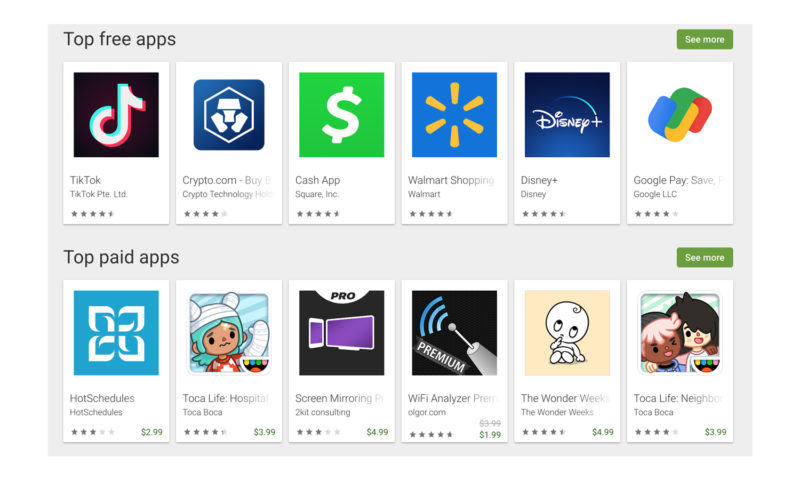
1.1 Pros and Cons of Free Mobile Apps
Pros
- More users are willing to download apps if they’re free
- Less likely to get negative reviews
- Opens the doors for multiple revenue streams since there’s no upfront fee to download the app
Cons
- Free apps often have less user engagement and can take a longer time to become profitable
- Less loyal users since they aren’t paying to use the app
- Since the majority of apps are free (92%), it’s more challenging to reach the app store’s Top/Featured lists
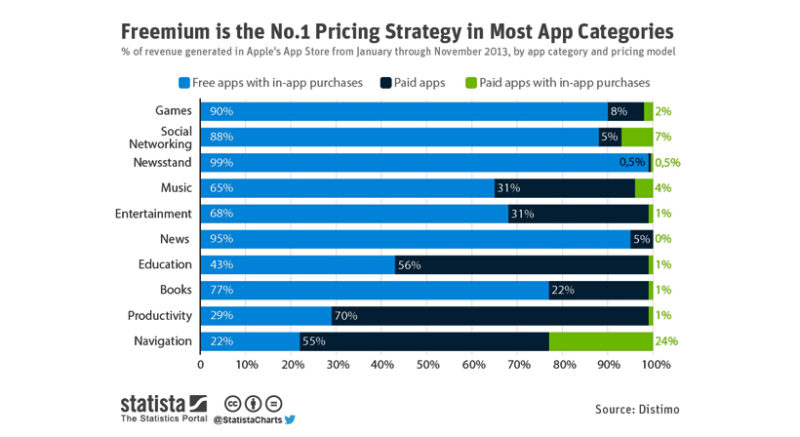
1.2 Pros and Cons of Paid Mobile Apps
Pros
- Higher user engagement and loyalty since these types of apps ensure paying customers are getting their money’s worth
- Less competition compared to a free app
- Guaranteed return on investment since income is generated based on user downloads
Cons
- Since users have already paid a fee to download the app, adding additional monetization methods can hurt your app
- Users have higher expectations when paying for an app, so quality needs to be high. High expectations can also lead to more negative reviews.
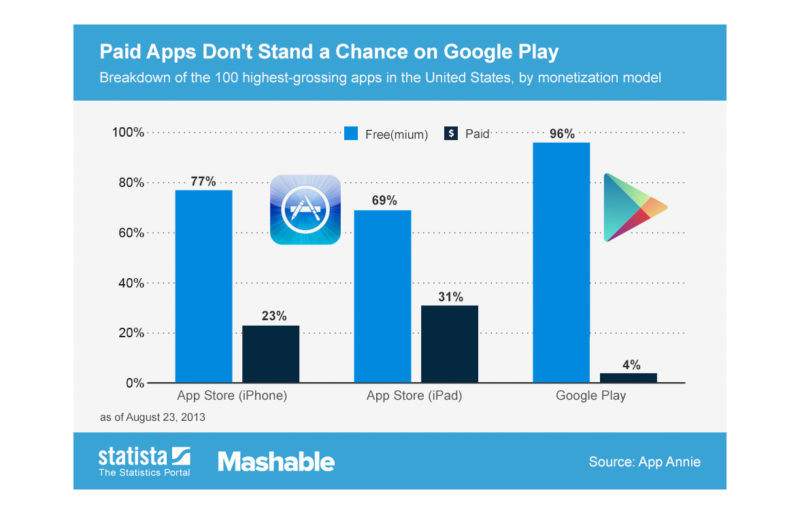
Chapter #2: In-App Purchases
Another popular avenue for generating income for a mobile app besides having users pay to download the app are in-app purchases.
This method involves selling physical or virtual goods within the app itself. This can be clothing, accessories, services, in-game currency, and so on.
This is why there are so many free gaming apps. They can easily make their profit from selling things like virtual currency, points, extra lives, gaming packages, and more.
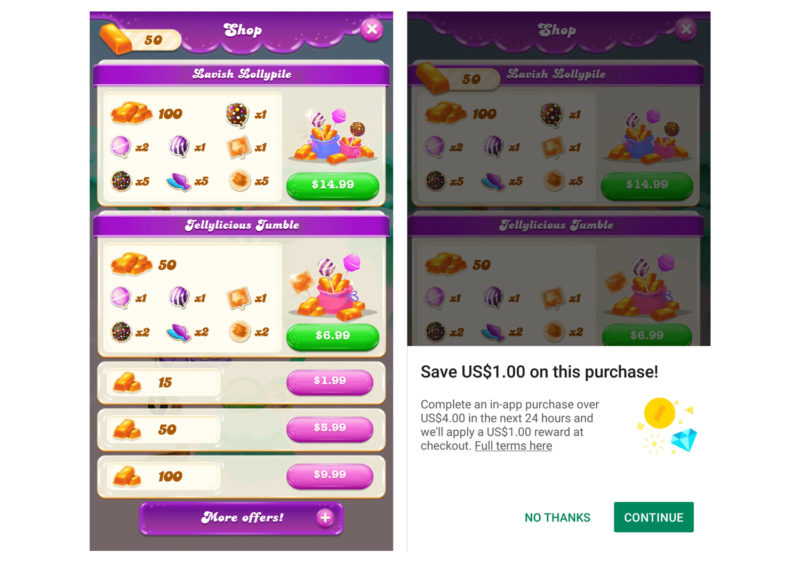
Photo Credit: leanplum.com
Candy Crush Saga is a widely popular gaming app that’s free to download and instead relies on both in-app purchases and in-app advertisements.
It’s earned $473 million US dollars in the United States through in-app purchases alone.
Players begin with a set number of “Lives”, but they have the option to buy more lives as well as “Extra Moves”, and a “Gold Bars package”, which lets users do a number of things in the app like unlock episodes and gain power-ups.
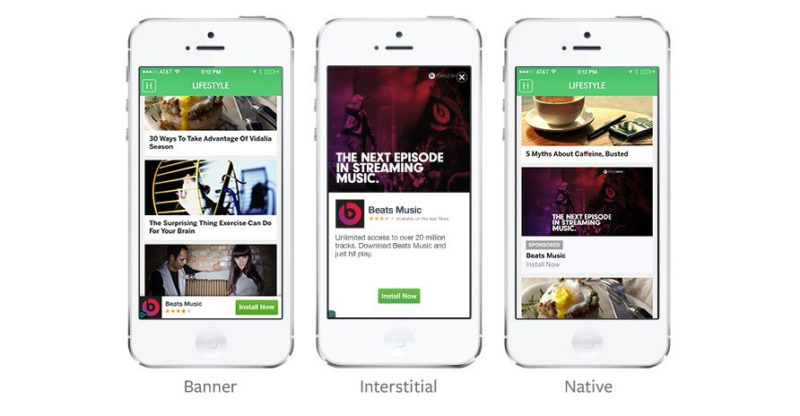
Photo Credit: instapage.com
Sometimes, an in-app purchase can even be to remove ads within the app.
As you can imagine, there’s a huge variety of what you can sell in your mobile app.
2.2 Pros and Cons of In-App Purchases
Pros
- By allowing for other methods of monetization, such as in-app purchases, this lets you offer your app for users to download for free, which will get you more downloads.
- In-app purchases are easy for users. They don’t need to fill out any forms. All it takes is a couple taps or a biometric authentication, which incentives users to make purchases.
- Users receive the instant benefit of in-app purchases and don’t have to wait for them.
- This revenue model is an excellent gateway to promote consumables as well as features of the app that are popular.
Cons
- To have the ability to accept in-app purchases, you’ll need to obtain some special certifications, which can take the mobile app development process longer.
- In-app payments typically require additional customer support, since users will need more help when something goes wrong.
- It could turn off some users who don’t like the idea of having to pay to unlock some features.
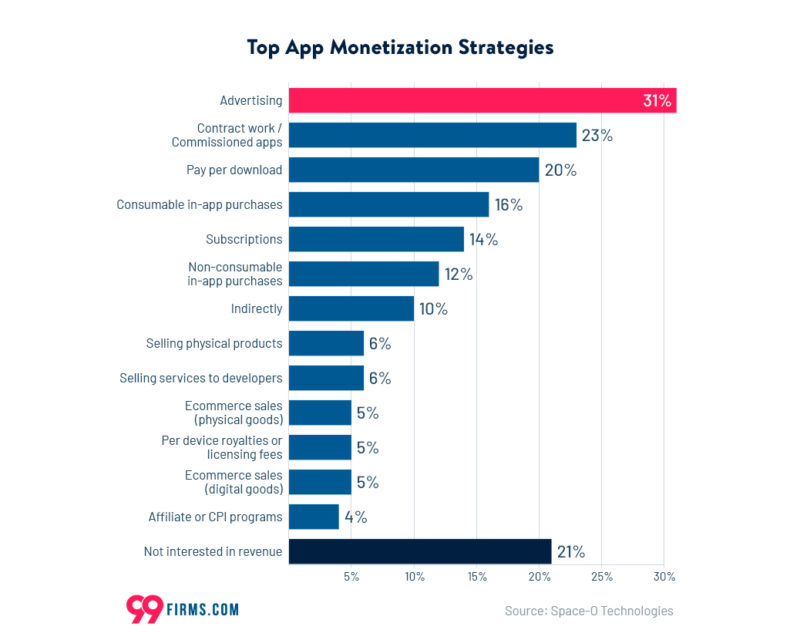
Chapter #3: Subscriptions
A subscription-based revenue model typically allows users to download the app for free, but if they want to unlock the real value of the app, they’ll need to pay a recurring subscription fee.
For example, the music app Spotify comes with a free and premium plan. The free plan gives users access to playlists and the ability to discover and share music, but the library of songs is limited.
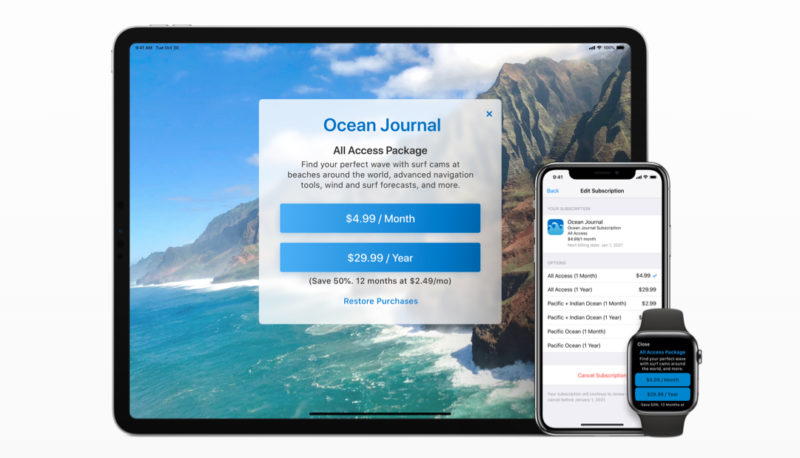
Paying for their monthly or annual subscription unlocks over 70 million songs as well as some features, such as ad-free listening, offline capabilities, unlimited skips, and mobile streaming.
This is a great business model because it allows users to get a taste of what the app can do. If they like it, they can opt to pay a subscription.
3.1 The Two Models of Subscriptions
The first subscription model is non-renewing. The users pay for one subscription period and when it ends, they can opt to buy another subscription.
The second subscription model is automatically renewing. As you can guess, this model allows users to pay for the subscription, which will automatically renew when the subscription period ends.
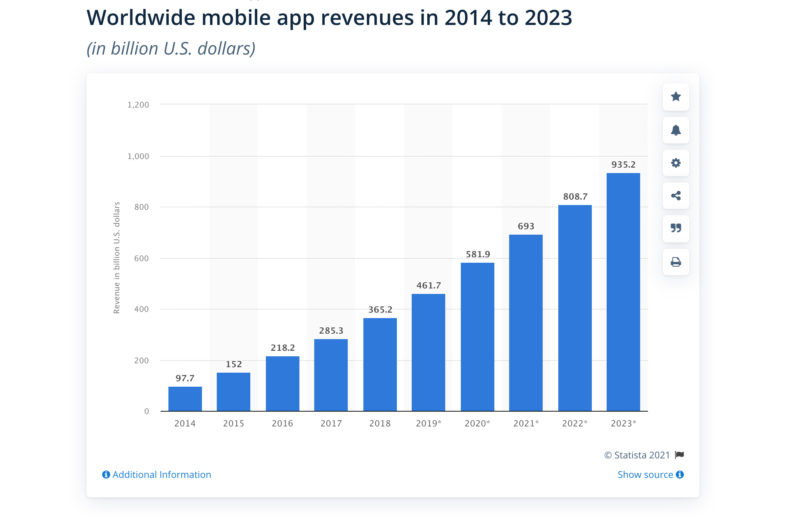
PRO TIP:
The success with a subscription model depends greatly on providing your target audience with valuable content they expect from your app.
3.2 Subscription Model Pros and Cons
Just like any other revenue model, subscription-based apps have their pros and cons.
Pros
- Apple rewards this revenue model over others and gives developers an 85:15 revenue split as opposed to the standard 70:30 split for subscription plans that last over a year. This is because a subscription plan means retaining users over a longer period of time.
- Apps with a subscription model generally see higher revenue each year per user than other models.
- It offers a more reliable source of income. You can predict the revenue that will come in each month.
Cons
- You’ll need to be constantly refreshing content and offering new features to keep users paying a subscription.
- A free-trial period is vital for this type of revenue model and allows users to understand what the app offers as well as its value. All apps do this a bit differently, with some offering only a week free month trial and others a month.
PRO TIP:
To do this monetization model right, you’ll need to show your users your app’s value. A free trial period is a great opportunity to do so.
Figure out what’s the best free trial period for your app’s users to get them to take the plunge and sign up as a subscriber.
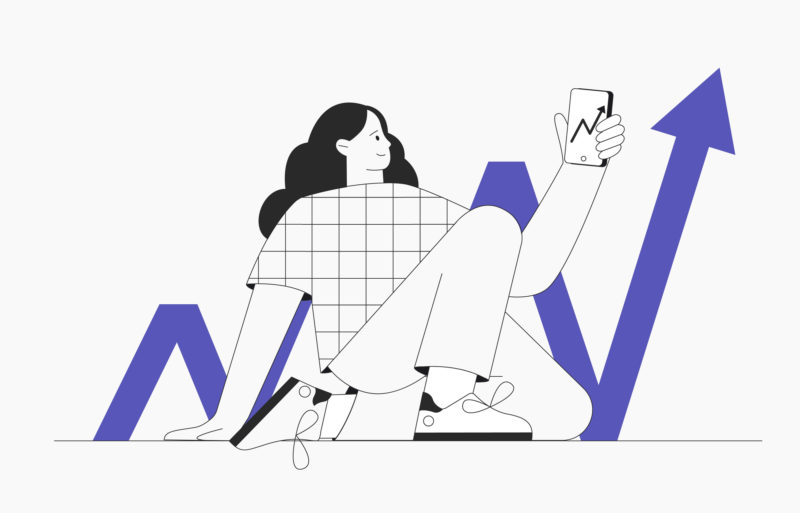
Chapter #4: In-App Advertisements
When mobile apps are completely free to download, you’re almost guaranteed to encounter some form of advertisement in the app.
While it may be annoying at times to users, it can be incredibly profitable.
Apps that users pay for generally don’t have any ads and that’s because they don’t need to rely on additional revenue streams if users are already paying.
So what exactly are in-app ads?
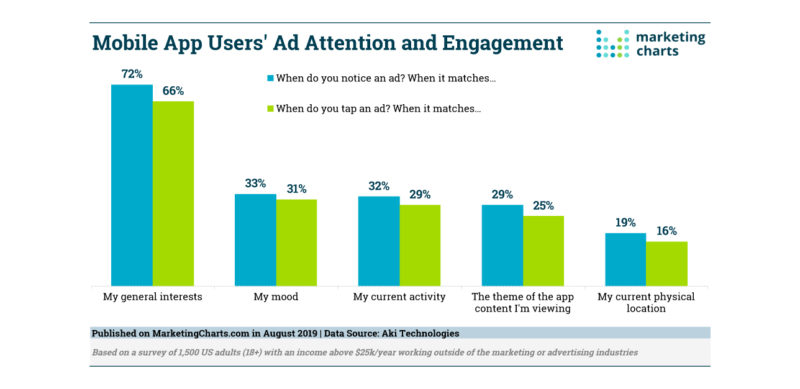
Mobile apps will leverage the mobile screen real estate within their app to show ads to users, whether it’s a banner ad, pop-up ad, or something else.
How it generally works is ad buyers will pay mobile app developers or agencies for displaying their advertisements in the app.
Apps in the gaming, social, and entertainment categories rely heavily on this form of revenue since they’re typically free apps to download.
4.1 Ad Pricing Models
There are a few different pricing models you could leverage for in-app ads which will vary in risk and reward for both the ad publisher (you) and advertiser.
Cost Per Mille (CPM)
This is how much an advertiser will pay you for every 1,000 (mille) times the ad gets displayed. This is a great option for app developers because all they need to do is show the ad to get paid, but the margins are slimmer than other models.
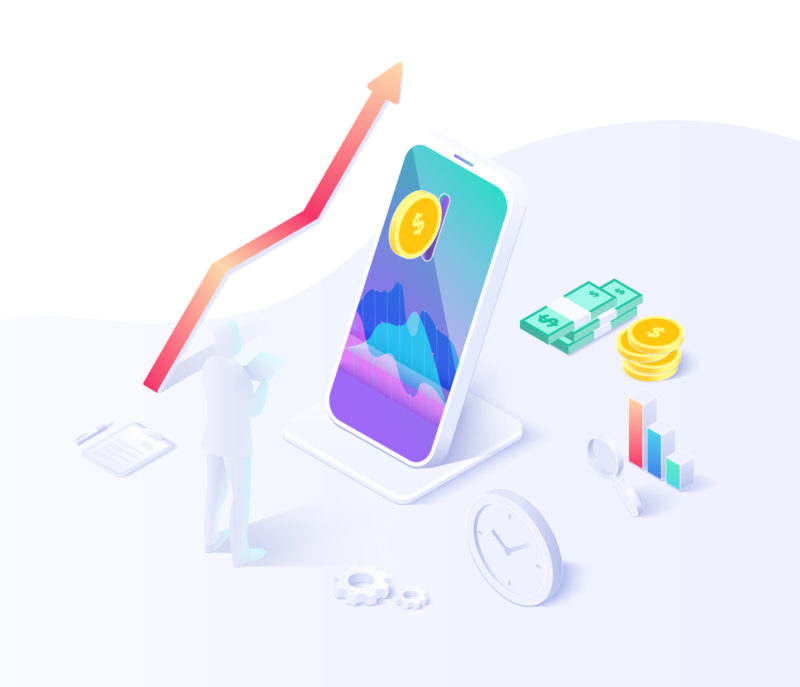
Cost Per Click (CPC)
In this model, the advertiser will only pay you, the publisher, when a user clicks on an ad. You can often demand a higher price per click with this model but you’ll have to serve more impressions to generate the desired number of clicks. In short, you’ll have to work harder for the money.
Cost Per Action (CPA)
In this model, the advertiser will pay the publisher whenever a click leads to a specific action in the app, such as a purchase, registration, etc.
With solid user targeting, this model can be lucrative since you can charge higher CPA rates, but since the requirements are more specific, it’ll be harder to get users to follow through with the desired action.

4.3 Video Ads
Video ads in mobile apps are generally short and will often be displayed before another video the user is trying to watch.
Video ads are high-engaging ad formats and come with strong click-through rates, which is why mobile app developers love using them.
Many apps will allow users to opt in to view a video ad, which are typically between 15-30 seconds long, in exchange for some kind of reward, like in-game virtual currency.
These are called rewarded video ads and are also good for user engagement.
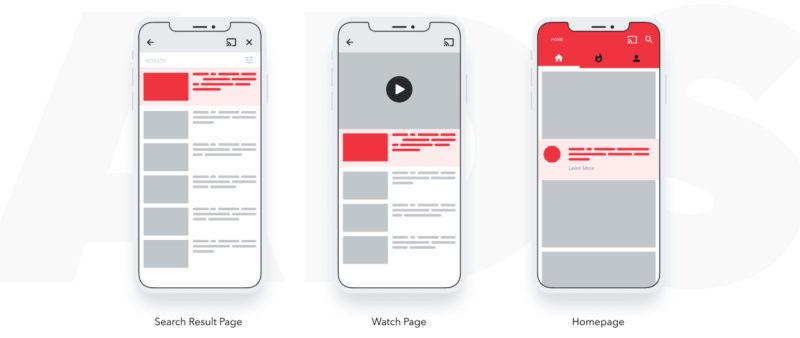
Photo Credit: blog.admixer.com
4.4 Interstitial Ads
These types of ads are also sometimes referred to as screen ads.
They’re generally less intrusive for users because they’re set to appear during an app transition, such as in between levels in a gaming app, for example.
Interstitial ads can contain static content or display video.
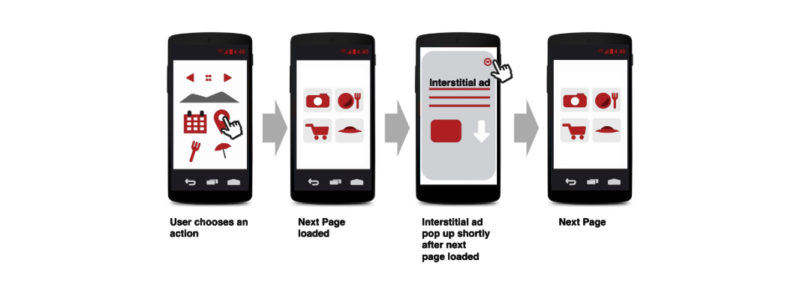
Photo Credit: instapage.com
4.5 Native Ads
These ads will appear in the natural flow of the mobile application’s content. For example, if you’re scrolling through Instagram, you might see a native ad in your feed.
The idea behind native ads is to have the advertisement blend into the natural look and feel of an app, so it’s not as intrusive as other ad formats, but can still capture user attention as they scroll.
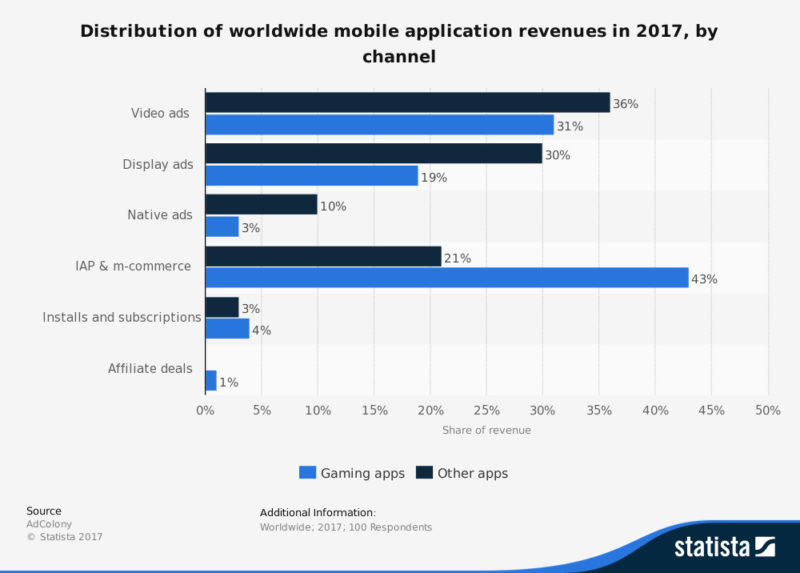
4.6 User Engagement & Retention Strategies
User engagement and retention are often anchored by a few pivotal strategies.
One of the most influential is an effective onboarding process, which swiftly immerses users into the app’s ecosystem, highlighting its benefits.
Simultaneously, the app experience is enriched when it’s tailored to individual user behaviors and preferences, making each interaction more resonant.
Timely push notifications act as reminders, pulling users back into the fold, while the assurance of consistent updates keeps the app fresh and addresses any potential issues.
And of course, establishing a dialogue with users through a robust feedback mechanism not only helps in refining the app but also builds a sense of community, vital for sustaining long-term interest.
4.6 Affiliate Marketing and Referral Programs within Apps
This involves partnering with businesses to promote their products or services within your app.
For every sale or lead generated from the referral, the app owner earns a commission.
By integrating related affiliate products or services, app developers can generate substantial revenue without disrupting the user experience.
For example, a fitness app could promote health supplements or workout gear. Furthermore, referral programs encourage existing users to invite new users to the app, often in exchange for rewards or premium features, driving both user growth and revenue.
Final Thoughts
As you can see, there are many ways you can earn money from mobile apps, whether it’s in-app purchases, advertisements, paid apps, or a subscription model.
Just keep in mind that many successful apps take a blended approach. It’s also completely normal to test the different methods to see which works best for your user base.
Let us help you plan every aspect of your mobile app, from app idea to technical specs, marketing, and business model with our Simple Starter package.
As a mobile app user, which revenue model do you prefer?

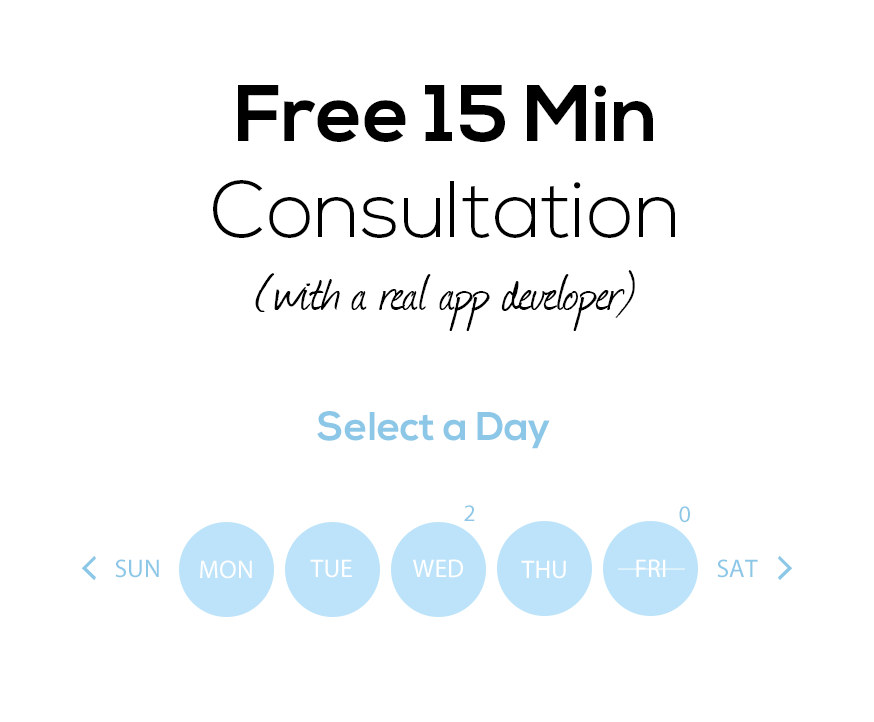


Your inbox wants some love.
Stay informed with Webiotic latest










0 Comments